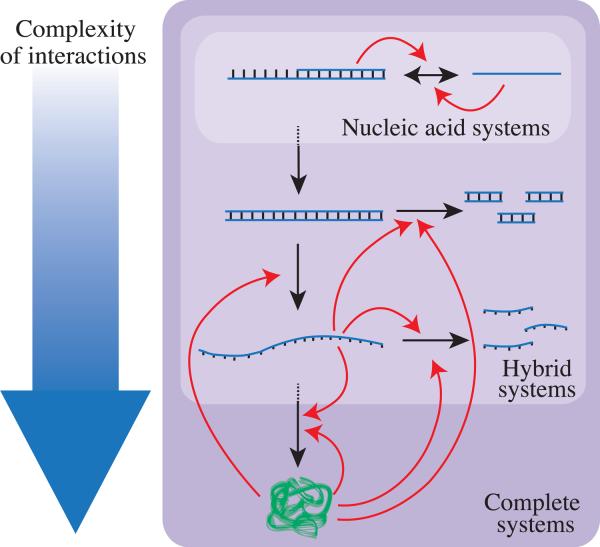Figure 1.
The reactions and molecular composition of different synthetic in vitro circuits. Black arrows represent routes of information flow while red arrows represent interactions capable of controlling or modulating this flow. Nucleic acid based systems contain relatively few types of interactions, resulting in more predictable behavior. Hybrid systems, which are capable of producing and degrading nucleic acids, are intermediate on this scale with several new points of control and information flow. Complete systems can replicate the entire `central dogma', but their increased complexity of interactions makes them less predictable. Note: small-molecule inputs and outputs via enzymes, ribozymes, and deoxyribozymes can, in principle, occur in all systems.

